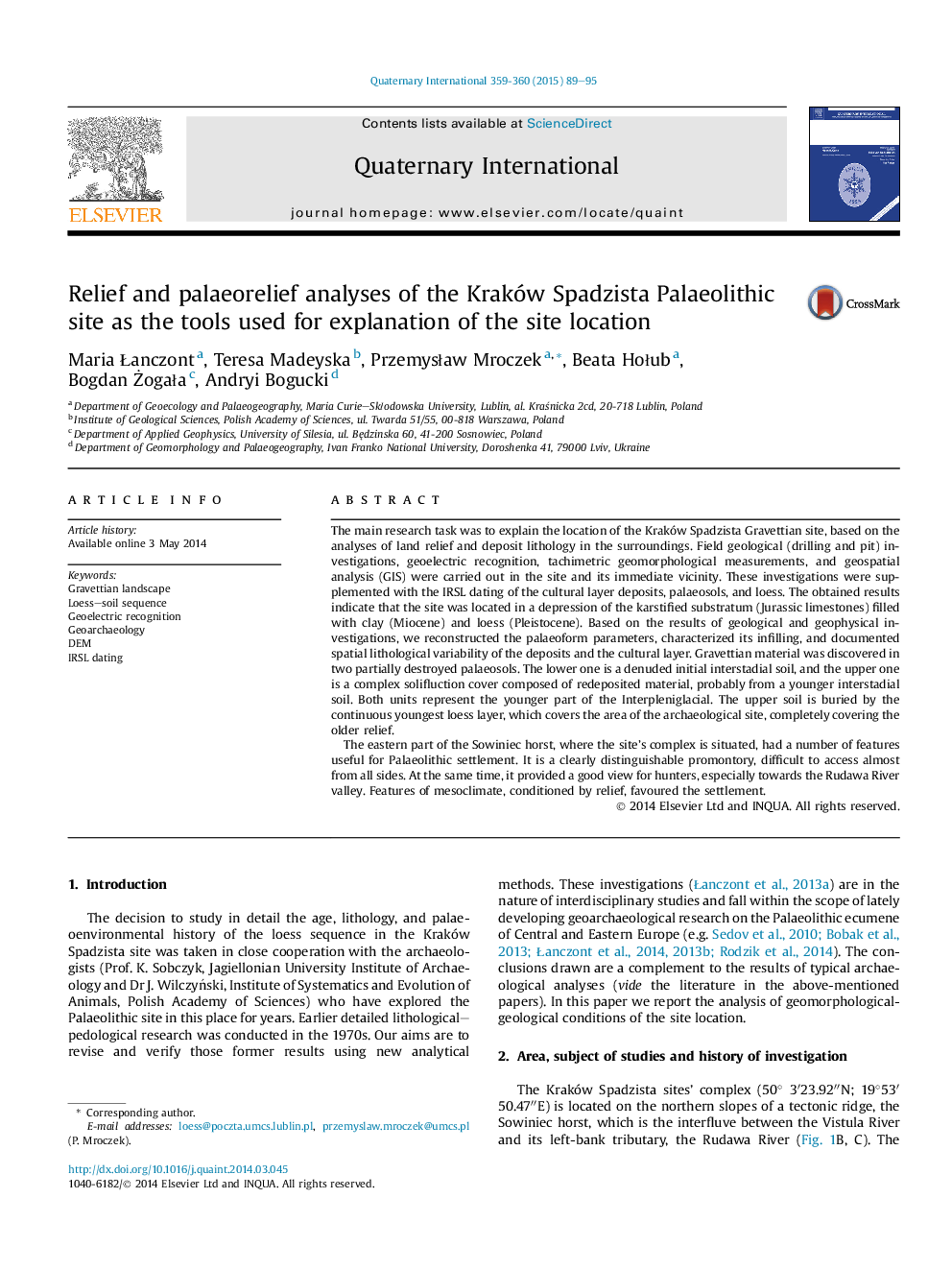| Article ID | Journal | Published Year | Pages | File Type |
|---|---|---|---|---|
| 1040973 | Quaternary International | 2015 | 7 Pages |
The main research task was to explain the location of the Kraków Spadzista Gravettian site, based on the analyses of land relief and deposit lithology in the surroundings. Field geological (drilling and pit) investigations, geoelectric recognition, tachimetric geomorphological measurements, and geospatial analysis (GIS) were carried out in the site and its immediate vicinity. These investigations were supplemented with the IRSL dating of the cultural layer deposits, palaeosols, and loess. The obtained results indicate that the site was located in a depression of the karstified substratum (Jurassic limestones) filled with clay (Miocene) and loess (Pleistocene). Based on the results of geological and geophysical investigations, we reconstructed the palaeoform parameters, characterized its infilling, and documented spatial lithological variability of the deposits and the cultural layer. Gravettian material was discovered in two partially destroyed palaeosols. The lower one is a denuded initial interstadial soil, and the upper one is a complex solifluction cover composed of redeposited material, probably from a younger interstadial soil. Both units represent the younger part of the Interpleniglacial. The upper soil is buried by the continuous youngest loess layer, which covers the area of the archaeological site, completely covering the older relief.The eastern part of the Sowiniec horst, where the site's complex is situated, had a number of features useful for Palaeolithic settlement. It is a clearly distinguishable promontory, difficult to access almost from all sides. At the same time, it provided a good view for hunters, especially towards the Rudawa River valley. Features of mesoclimate, conditioned by relief, favoured the settlement.
